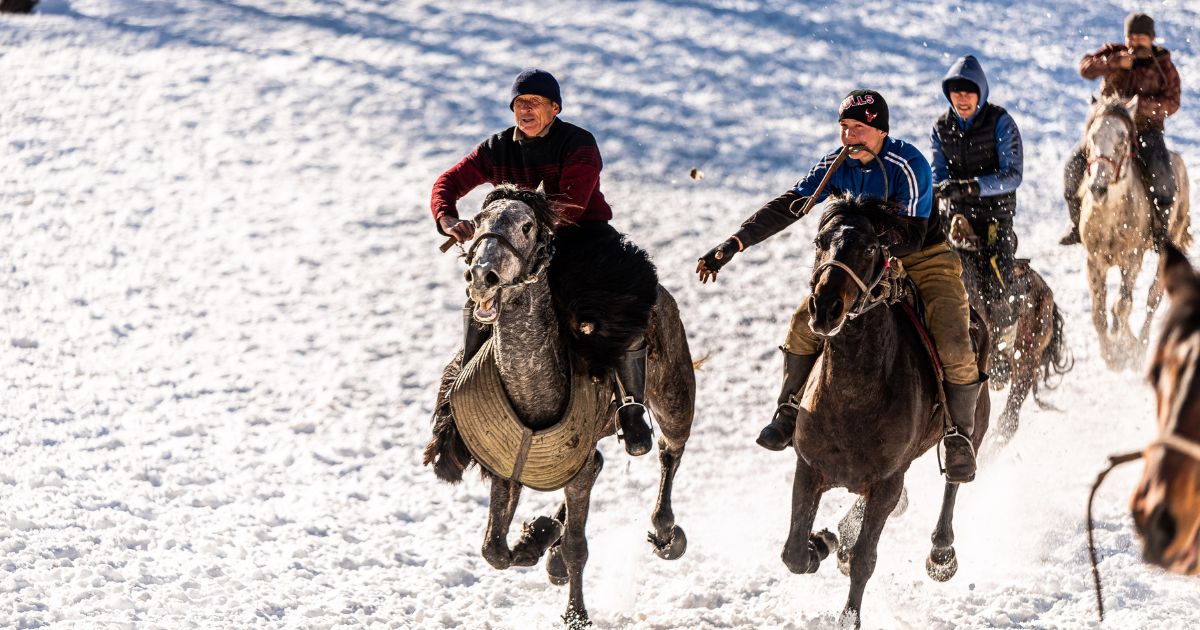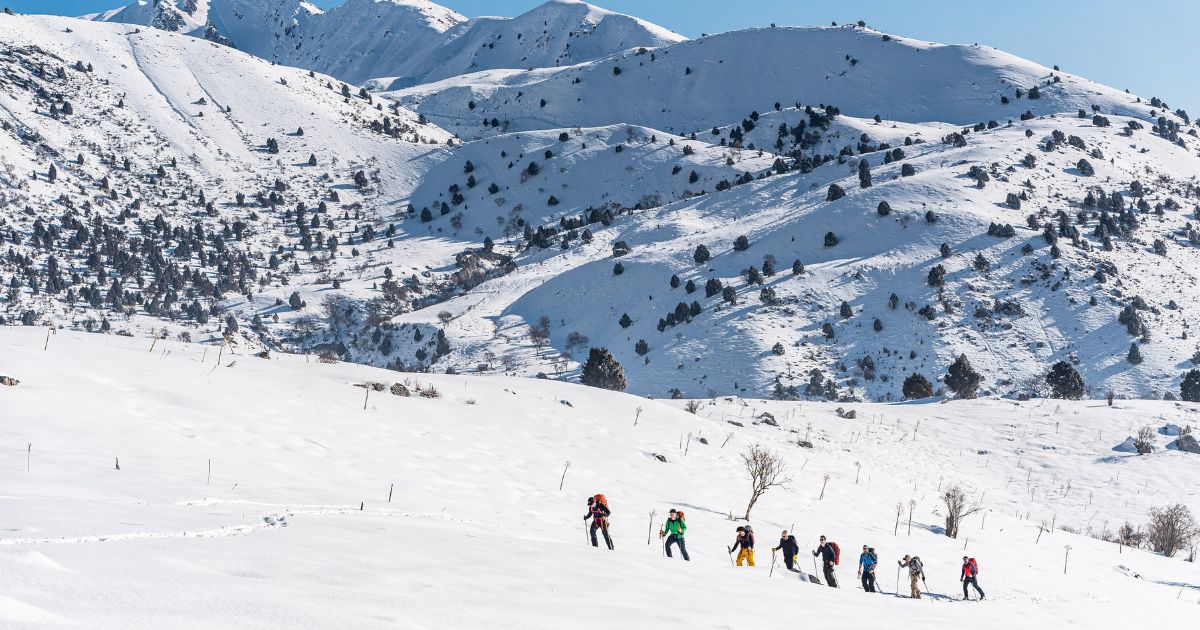Last Spring, Photographer, Writer, and Weston Ambassador, Josh Laskin and crew embarked on a splitboarding mission to the unique and remote destination of Kyrgyzstan. Explore the scenes of Splitboarding In Kyrgystan through Laskin's lens in this personal expedition photo-journal. Follow @joshlaskin for more pow slayin' greatness.
To much of the Western world, Kyrgyzstan is an unknown swath of land situated somewhere amongst a number of other “stan” countries in a politically volatile region of the world. “Isn’t that where Tommy Caldwell was kidnapped?” the outdoor adventure community would ask, referring to the professional climber who was held hostage during a climbing expedition in the late 1990’s.
And while that event did occur, and the landlocked country is in fact, nestled between Kazakhstan, Uzbekistan, Tajikistan, and China, knowledge about the country typically stops there. But for the adventurous few who have dared to travel to this unfamiliar and distant corner of the earth, Kyrgyzstan is a world of calm, centered around the simplicity that can be found in the mountains.
In the bustling urban center of Bishkek, shops and markets serve hot tea and laghman, a traditional noodle-heavy dish often topped with horse meat, while in the countryside, nomadic tribes continue to live traditional lifestyles, untouched by any political turmoil that may occur. Craggy skylines make up the horizon almost everywhere in the country; a dream for the adventurous and outdoor-focused. So when the first Community-Based Tourism (CBT) office was opened in the early 2000’s, it was no surprise the potential for climbing, mountaineering, trekking, and skiing truly began to be discovered by the rest of the world.
In January 2022, I had the privilege of joining East Coast-based guide service Northeast Mountaineering on their inaugural trip to the country, using both my camera and snowboard as a vessel to discover and learn about a new-to-me culture and region.

[DSC1385] Once a major stop along the ancient Silk Road trade route, city markets and bazaars sell spices, dried fruits, nuts, and other essentials to community members. Trips to Kyrgyzstan often start in the capital city, Bishkek, where travelers can wander the streets, taking in the sights, smells, and sounds for the first time.

[DSC7978] The mountains just beyond the city limits serve as the perfect place to brush up on avalanche safety skills, ensuring everyone in the group is on the same page. In the remote corners of Kyrgyzstan, there are no avalanche reports. In fact, it’s difficult to acquire much of an idea about what has been going on in terms of snowfall and conditions prior to arriving and making your own assessments.

[DSC9079] Ancient walnut forests engulf the hillsides above Arslanbob, a small village in the southern part of the country, that we’d call home base for the next six days. These forests, which are said to have provided the walnuts Alexander the Great took with him to introduce to Europe, are the oldest in the world. Using a snowboard or skis as a means to travel through these trees, which are just as important now to the local community as they were back then, instills a sense of historic, cultural, and economic significance unmatched by anything else I had experienced to date.

[DSC687] Alpine ridges, situated high above the valley floor, just out of reach of car and horseback, provide a world of un-skied, or seldom skied, fields of powder.

[DSC1251] With 94% of the country being composed of mountains—the highest of which exceed 7,000 meters—adventurous skiers, riders, and mountaineers find themselves in a playground unrivaled by some of the most popular destinations in the world, with no one to compete with for first tracks.

[DSC0505] Kyrgyzstan, which emerged from the collapse of the Soviet Union in 1991, is an unlikely place to find a community of skiers. But with the introduction of the first Community-Based Tourism (CBT) office in 2001, whose goal is to promote tourism in an effort to stimulate the local economy and preserve both natural and cultural resources throughout the country, an increasing number of locals in communities nationwide are learning to ski, speak English, and host guests on excursions in the mountains.

[DSC1057] In a community where the unemployment rate hovers around 85% during the winter months (and 80% during the summer), skiing not only provides a welcomed source of income for locals, but also an enjoyable way to spend time.

[DSC9173] In town, the next generation of excited ski and snowboard guides welcome tourists, eager to learn as much as possible about the sport and its inevitable evolution. Much of the gear in rural communities through Kyrgyzstan is outdated, acquired only on rare occasions through donations by visitors.

[DSC8815] For centuries, nomadic tribes traveled (and in many cases, continue to today) by horseback through the countryside, living a traditional lifestyle. Today, horses are still an important means of transportation, and serve as a great way to get travelers to the start of the skin track on the outskirts of town.

[DSC0832] During each tour, guides haul food and drink into the backcountry by horseback, preparing traditional lunches consisting of walnuts, breads, pasta and rice dishes, and meats (often horse or beef), to be enjoyed on a makeshift table of snow. As there isn’t a grocery store accessible, food is always sourced from within the community.

[DSC1956] Each week throughout the winter, male community members gather in the fields on the outskirts of town to compete in games of ulak tartysh, which is a traditional nomadic game similar to polo, but with a headless, legless goat carcass instead of a ball. At the end of the game, the victor must prepare the goat meat, now tender from being batted around for hours, and host a feast in which all the participants are welcome.

[DSC1461] Despite the immense number of steep lines, technical summits, and narrow couloirs surrounding Arslanbob, some of the most memorable runs were in the low angle walnut forests just above town. Hollers of joy often echoed through the valley as we made turns in seemingly bottomless powder, often against a backdrop of the rising sun.

[DSC1671] At the end of nearly two weeks in Kyrgyzstan, spent skiing memorable lines, eating traditional meals, and sleeping in the home of a local, this mystery world no longer felt like a far-flung dot on a map, but instead, the home of a people with a vibrant and beautiful culture, living in the midst of one of the most spectacular landscapes in the world.


1 comment
Super interesting and appreciate the insights into the culture! I can’t help but wonder though as I was looking at the beautiful, awe-inspiring pictures… was your “crew” all white men? Is there a reason no women or POC were included? Would love to see more representation of minorities.